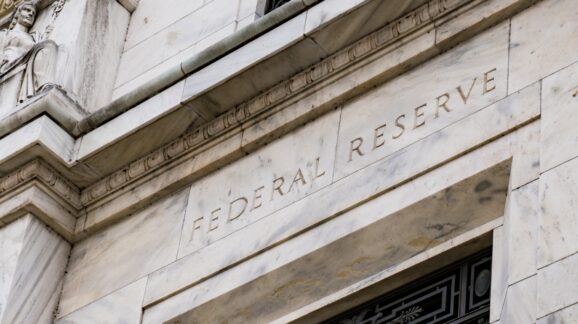February inflation stays high, fiscal credibility remains a problem

Photo Credit: Getty
Headline CPI inflation numbers sped up in February. Monthly inflation increased 0.3 percent in January, and 0.4 percent in February. Year-to-year inflation is 3.2 percent, up from 3.1 percent in January. But as always, things are a little more complicated under the surface.
Rising gasoline prices were part of February’s faster inflation. But even after increasing 3.8 percent in February alone, gas is still 3.9 percent cheaper than it was this time last year. Overall energy prices are down 1.9 percent from this time last year. While that’s mostly good news on energy, it also means that overall inflation is worse than the 3.2 percent headline number suggests. Energy price declines are covering up other price increases.
The Core CPI is up 3.8 percent over the last year, or nearly double the 2 percent target rate. This removes food and energy prices, which are prone to wild swings based on supply and demand, rather than the monetary inflation the Federal Reserve is concerned with.
Housing prices are the biggest culprit in Core CPI’s increase. Part of the problem is from the Fed raising interest rates in order to slow inflation. But housing is also subject to supply and demand problems, same as food and energy. Strict zoning codes, NIMBY activists, and excessive environmental reviews and other paperwork have paralyzed new housing starts, even as population increases and the overall housing stock ages. That has been driving housing prices up faster than inflation for decades.
Housing prices will continue to rapidly increase until state and local governments allow more housing to be built. Higher mortgage interest rates due to Fed policy are just the cherry on top of a bad policy cake.
Since most housing price problems are unrelated to monetary inflation, the true inflation number is likely worse than the headline CPI number, but better than the core CPI number.
No matter how you slice it, inflation remains well above target. The Fed has already done almost everything it can on monetary policy. It will likely leave interest rates unchanged at its Federal Open Market Committee meeting next week. It would like to lower rates, but the conditions are not yet right.
The biggest remaining inflation problem is the government’s credibility. Markets likely think another big spending binge is coming at the next sign of economic trouble, and neither party has credibility on spending issues. Companies are pricing expected inflation into their contracts and long-term supply chain plans. President Biden’s $7.3 trillion proposed budget is not helping inflation expectations. Donald Trump’s proposed tariffs and track record of policy instability do not offer a credible alternative.
The overall economy remains in good shape. GDP is growing faster than 3 percent, compared to a 2 percent average. Unemployment has been below 4 percent for almost two years now. If unemployment begins to slow, it is more likely because the economy is at or near full employment rather than due to any fundamental problems. That should give the Fed the ability to hold rates high for now, and will hopefully prevent another inflationary spending binge from Washington.